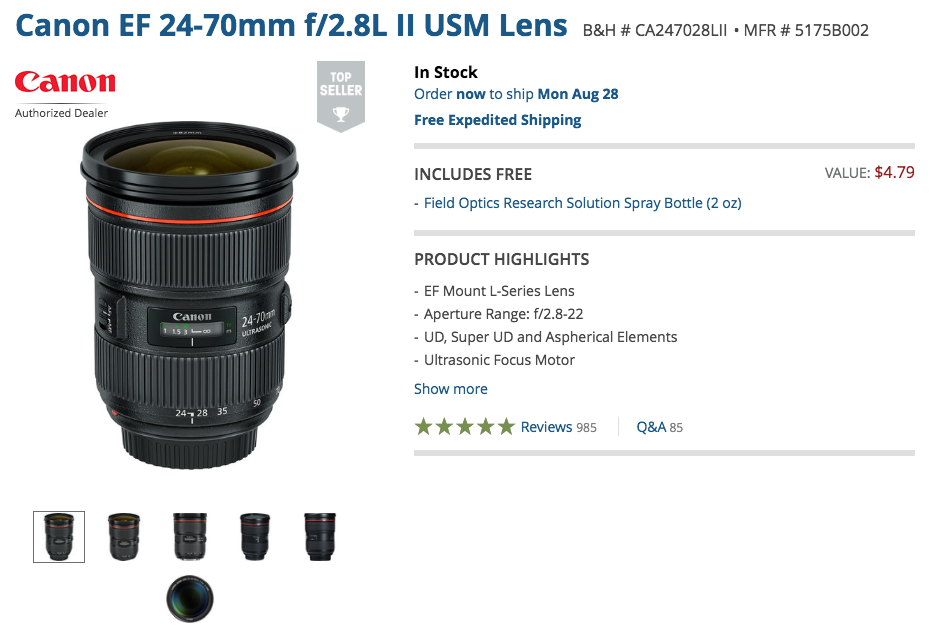Photographing the Eclipse
If I didn't have a camera, I would have had no interest at all in the eclipse.
It's a small dot moving in front of another dot way off in the distance. So in realtime, watching it unfold even in good viewing conditions is not particularly exciting. This is what it looked like, if all you had to work with was protective glasses and a phone.
But since I had some cameras & lenses, not to mention access to the roof of the office building I work in, I figured what the hell.
I took stock of what gear I had on hand and picked out what I would use. I figured taking still photos instead of videos would be better, considering the higher resolution, color depth & sharpness. Not to mention the fact that shooting stills would give me more flexibility with the shutter speed, which I would crank up to 1/8000th of a second because that's how bright the sun is. The Sony a7rii was an obvious pick here, over the a7s and a7sii, considering the 42 megapixel resolution (that's almost 8K).
In terms of the glass, the Canon 24-70mm L II has been my go to recently. It's a zoom lens that's sharper than all my other prime lenses, and the range in focal length is great for shooting in a variety of environments. I also packed my Rokinon 50mm and 85mm lenses since I had filters for those, but they were mostly afterthoughts.
Filters were the key here. The sun is bright. Real bright. So exposing the raw glass & camera sensor probably wouldn't be a good idea, not to mention that it would just result in overexposed pictures. The interesting puzzle here was the fact that lenses & filters aren't universal. The sizes need to match. Fortunately, I had 82mm, 77mm and 72mm UV protection filters, which fit with the lenses I had picked out (the 24-70, 50, and 85, respectively).
The ND filters were different. ND filters are designed to cut down on the brightness for outdoor shooting. Strong ND's aren't always necessary, but they're a plus for situations like this. The Tiffen 82mm variable ND filter I have is my crown jewel of lens filters because it's adjustable. It's not a fixed brightness, and its range allows me to adapt to whatever brightness I'm working with. It's also the filter that I bought to fit with my 24-70 lens, so it's a killer combo. But the 77mm B+W ND filter I have is the strongest. It's BUILT for stuff like this. So there was a good chance that this would be the lens to use, even though it fits on the 50mm lens which is a wider focal length than I'd like to use. I cleaned both of those filters very thoroughly are carefully that morning. I then threw my 72mm HOYA ND filter in along with them, since it's designed for the 85mm lens. But I didn't bother cleaning it off since I probably wasn't going to use it, it's the least dense of the three.
I was so wrong....
After getting up on the roof and setting up, it was immediately obvious that the 85mm lens is the only lens to use in this situation. Why? BECAUSE THE SUN IS VERY FAR AWAY. It's the type of spectacle that you want tight telephotos lenses to capture. Out of the 100+ photos I took of the eclipse, I honestly don't think I ended up taking a single photo with the 24-70mm or 50mm lens, nor with their corresponding filters that I spent so much time meticulously cleaning.
Moments like this make me feel like the dumbest photographer on the planet.
Was the shoot a disaster? I don't think so. All my preconceived notions went out the window and I just started shooting. This was around 1:30PM EST, so well before the peak part of the eclipse. What I didn't realize was this was the ideal time to shoot it. The cloud cover made for far more interesting images. It provided a texture that framed the eclipse, and surrounded it. I was able to capitalize on the colors rippling through the clouds.
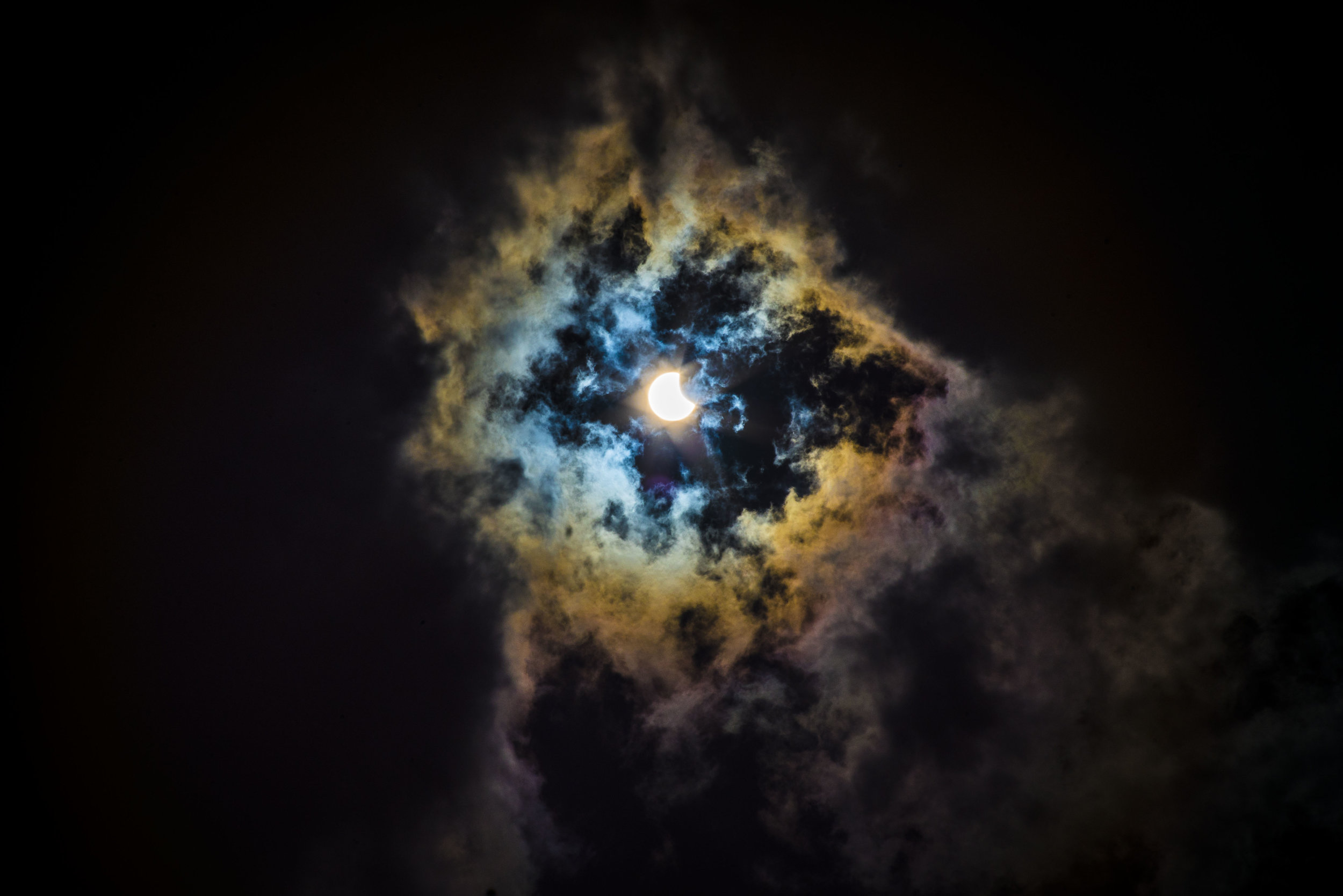
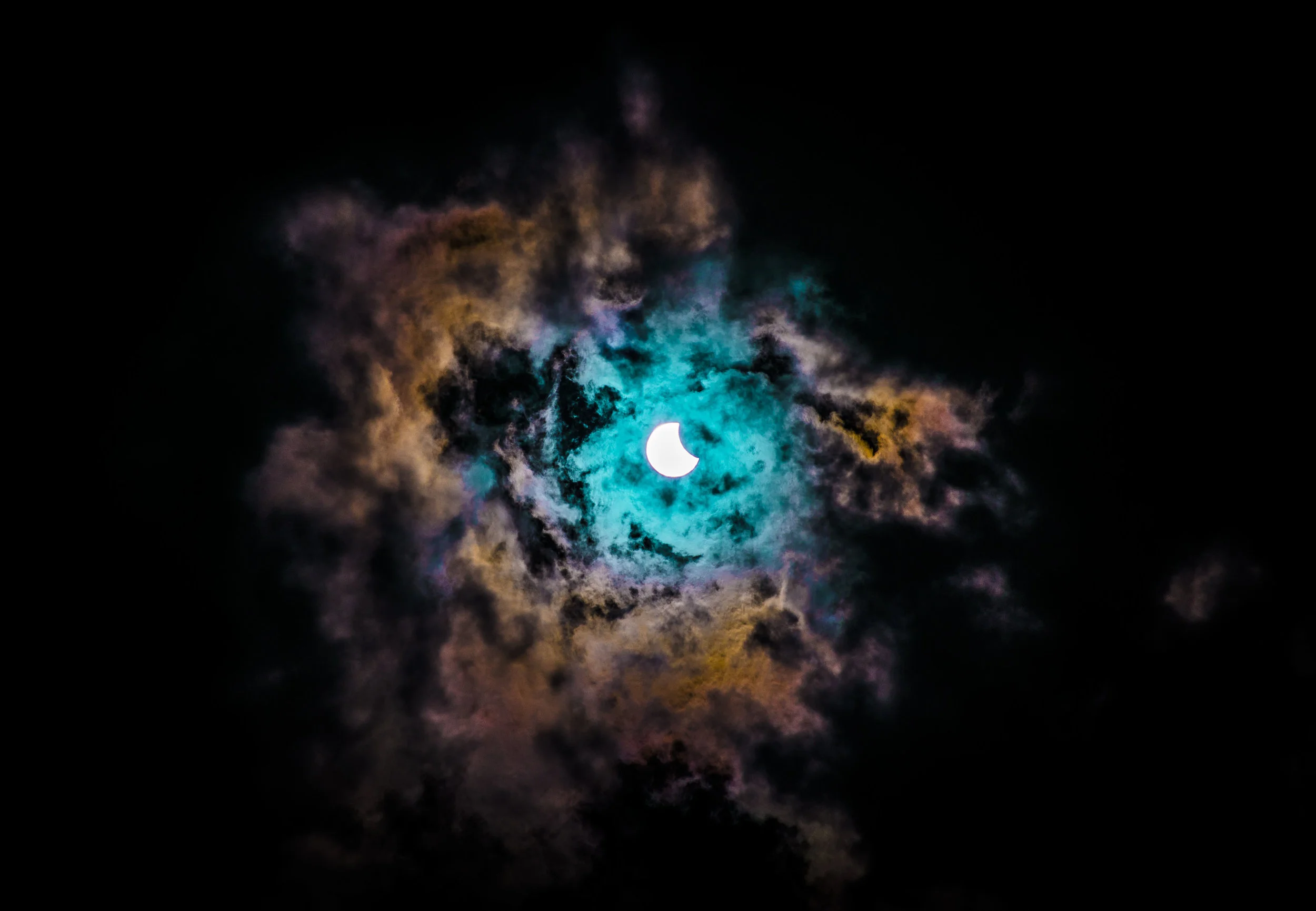
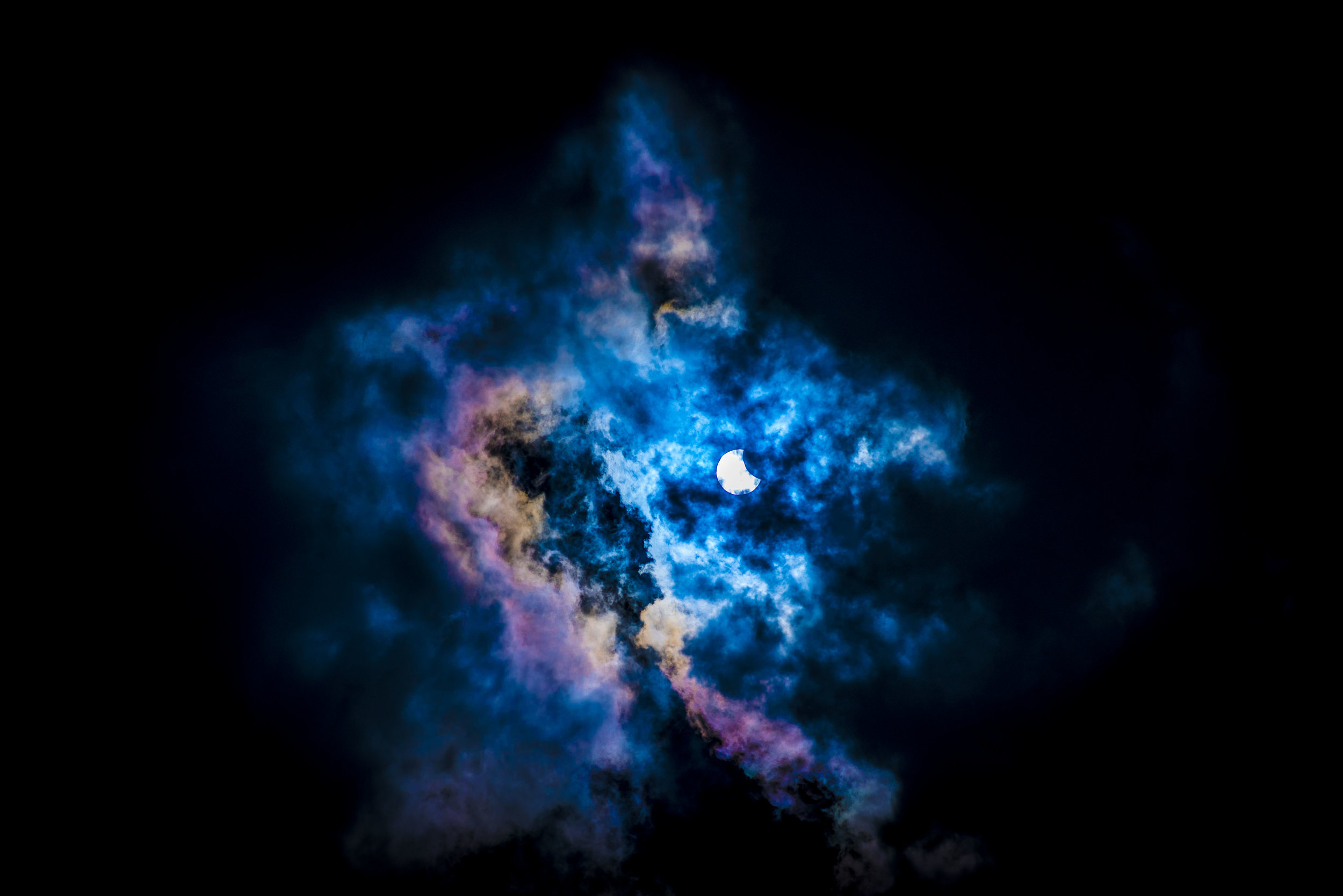
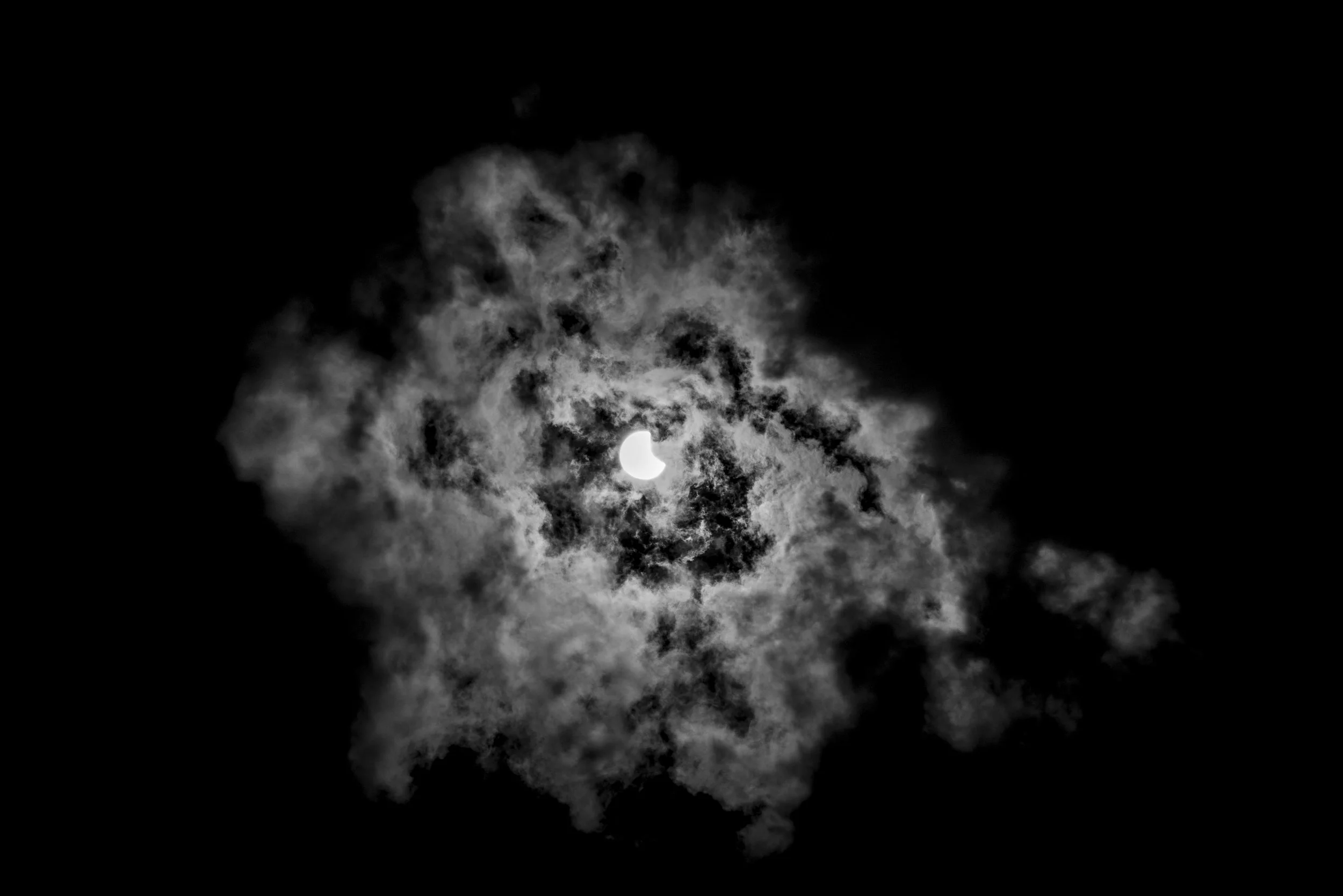
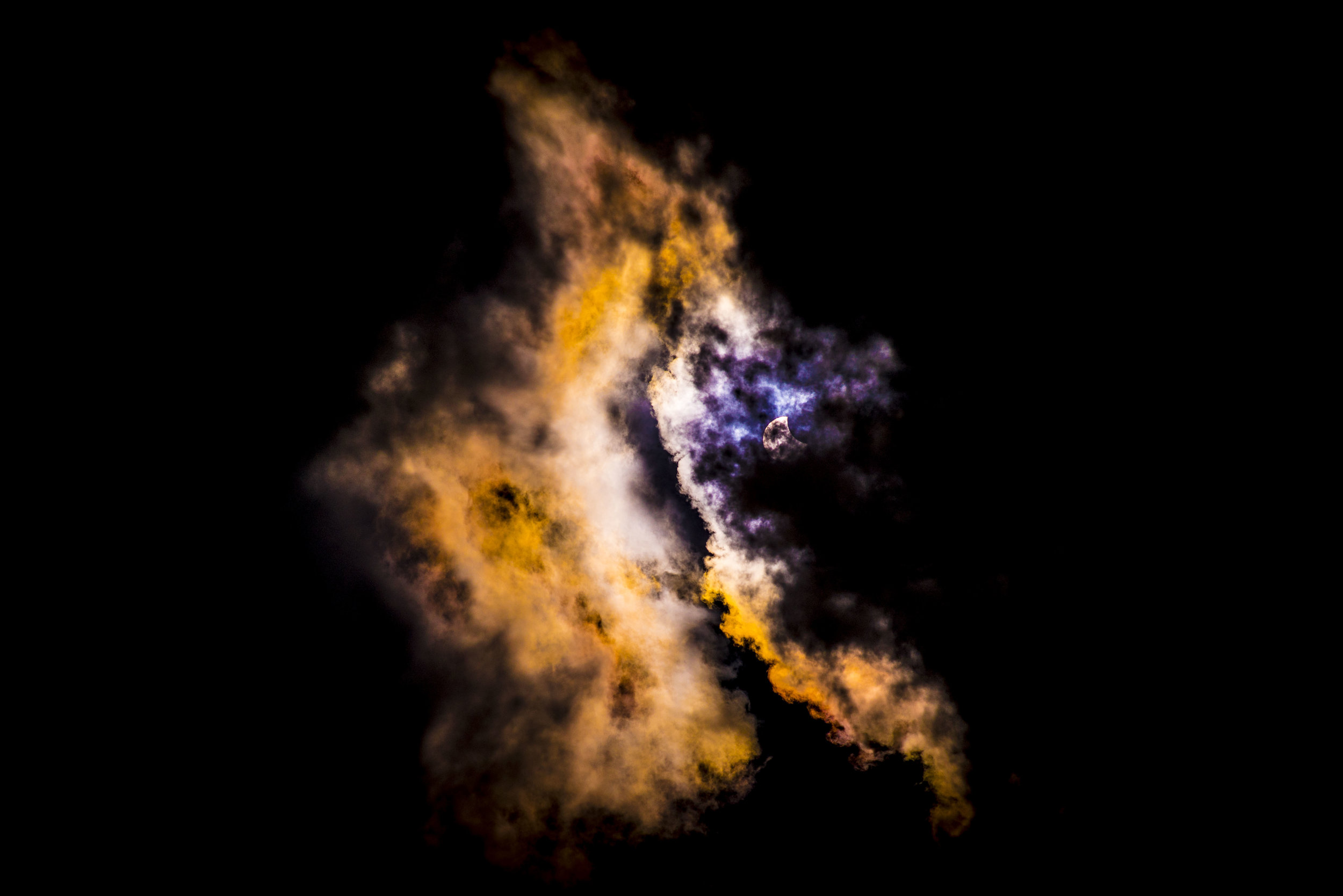
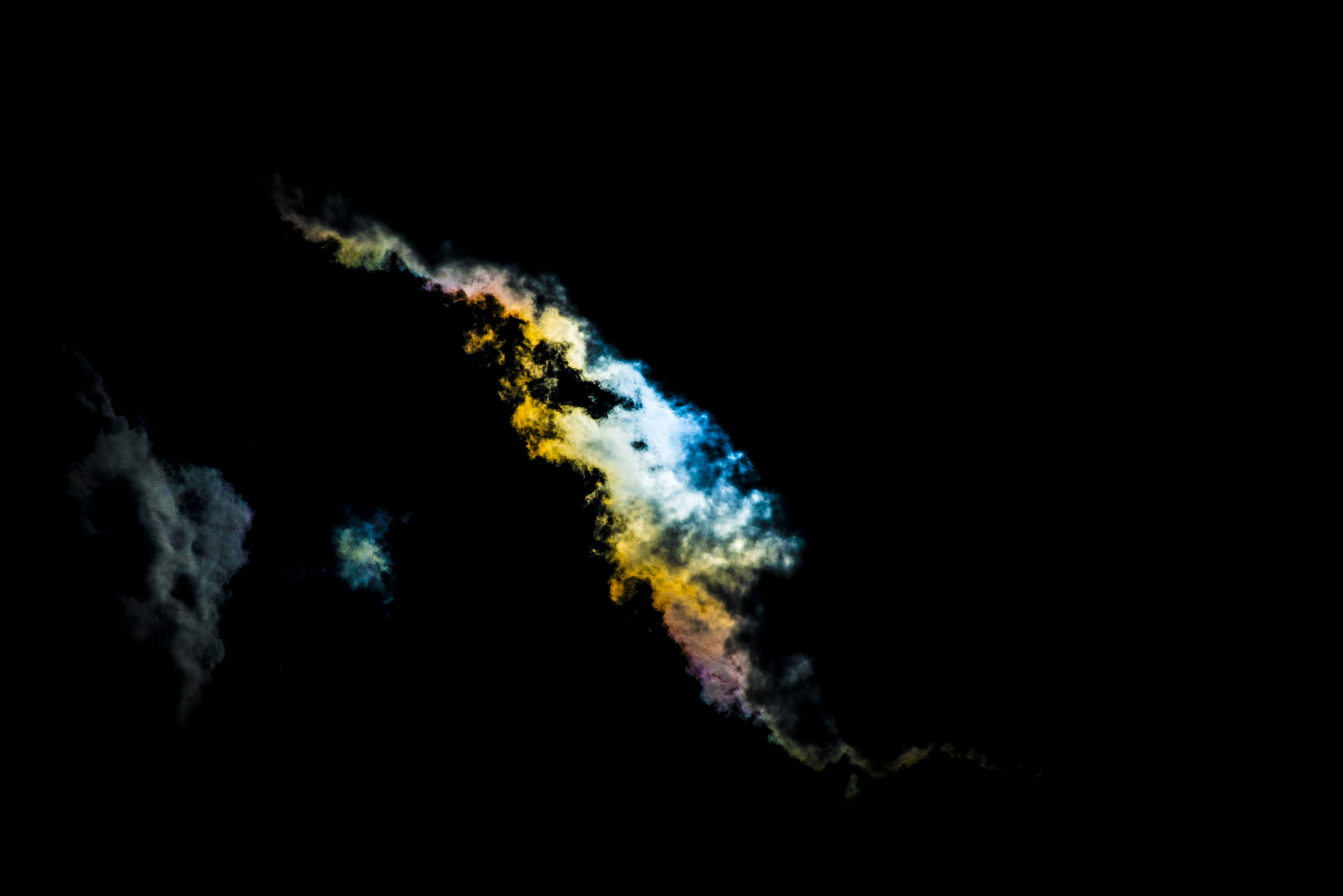
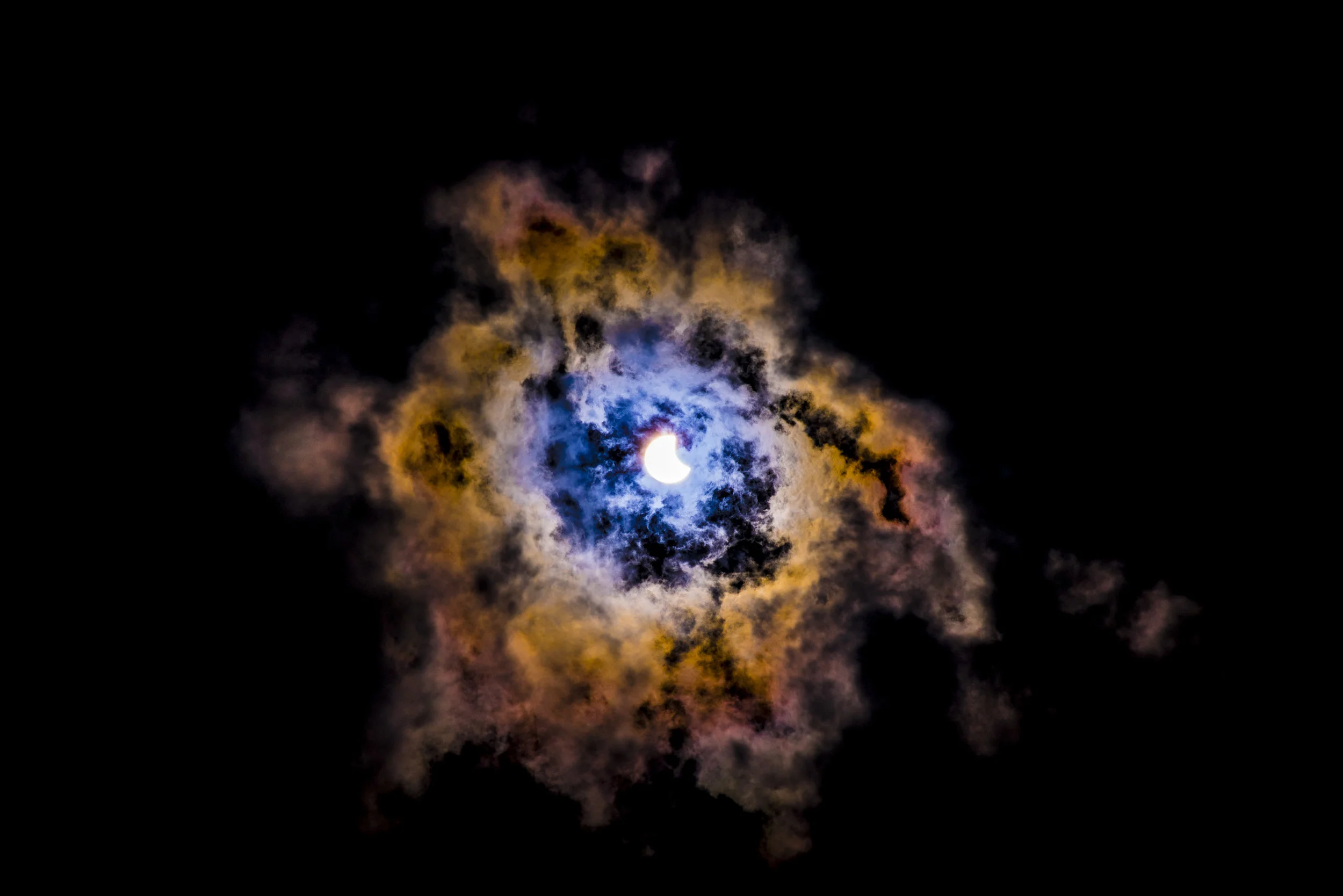
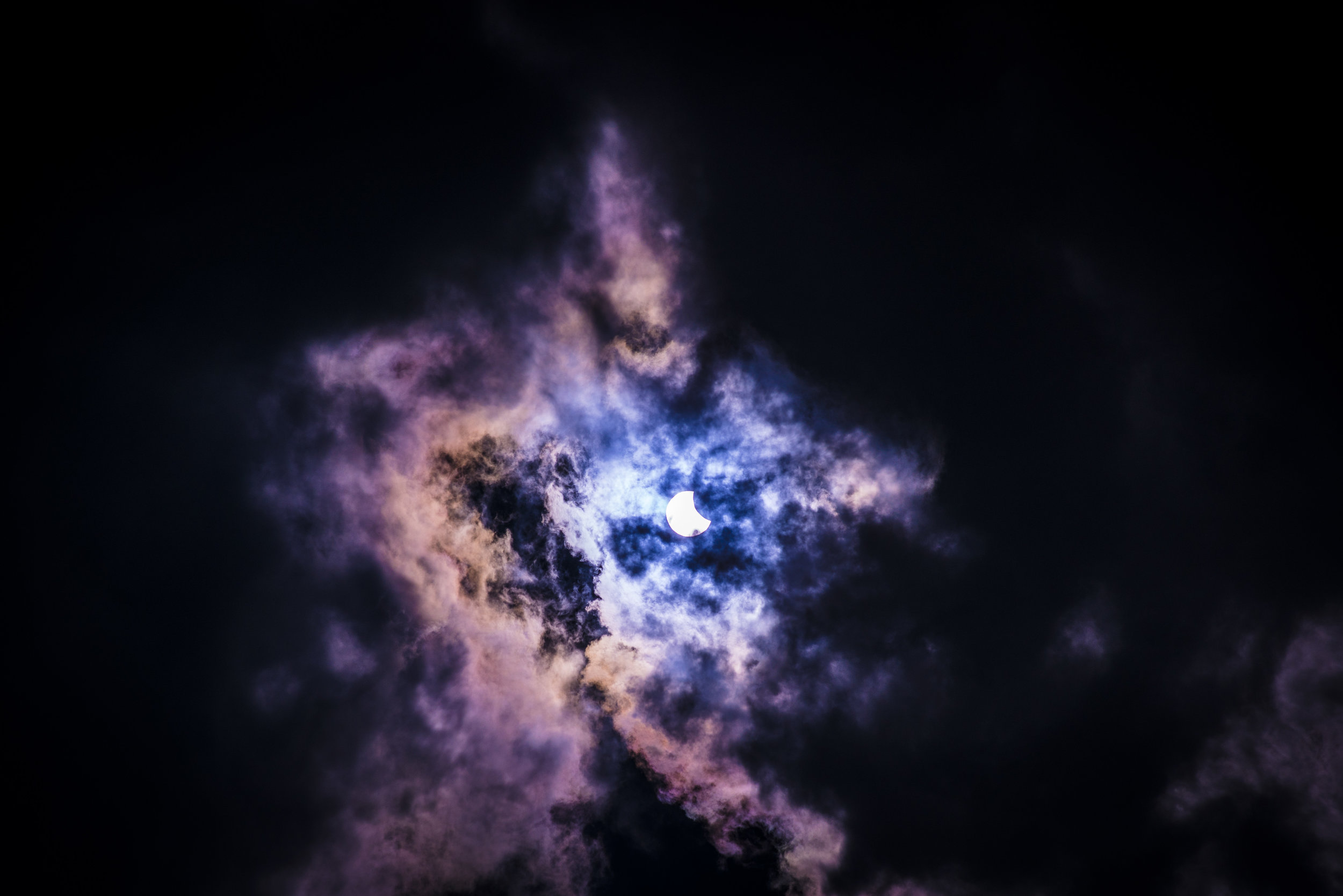
My only real regret is that I didn't hang around up on the roof for longer during this stretch. I probably took all of these in the span of five minutes. I headed back down to my office to offload & edit a few of these, while waiting an hour for the full eclipse. By that time, the cloud cover started to clear up, so I lost a lot of the sense of scale in the images. Still yielded some interesting stuff, but not as surprising to me as the first round of pictures.
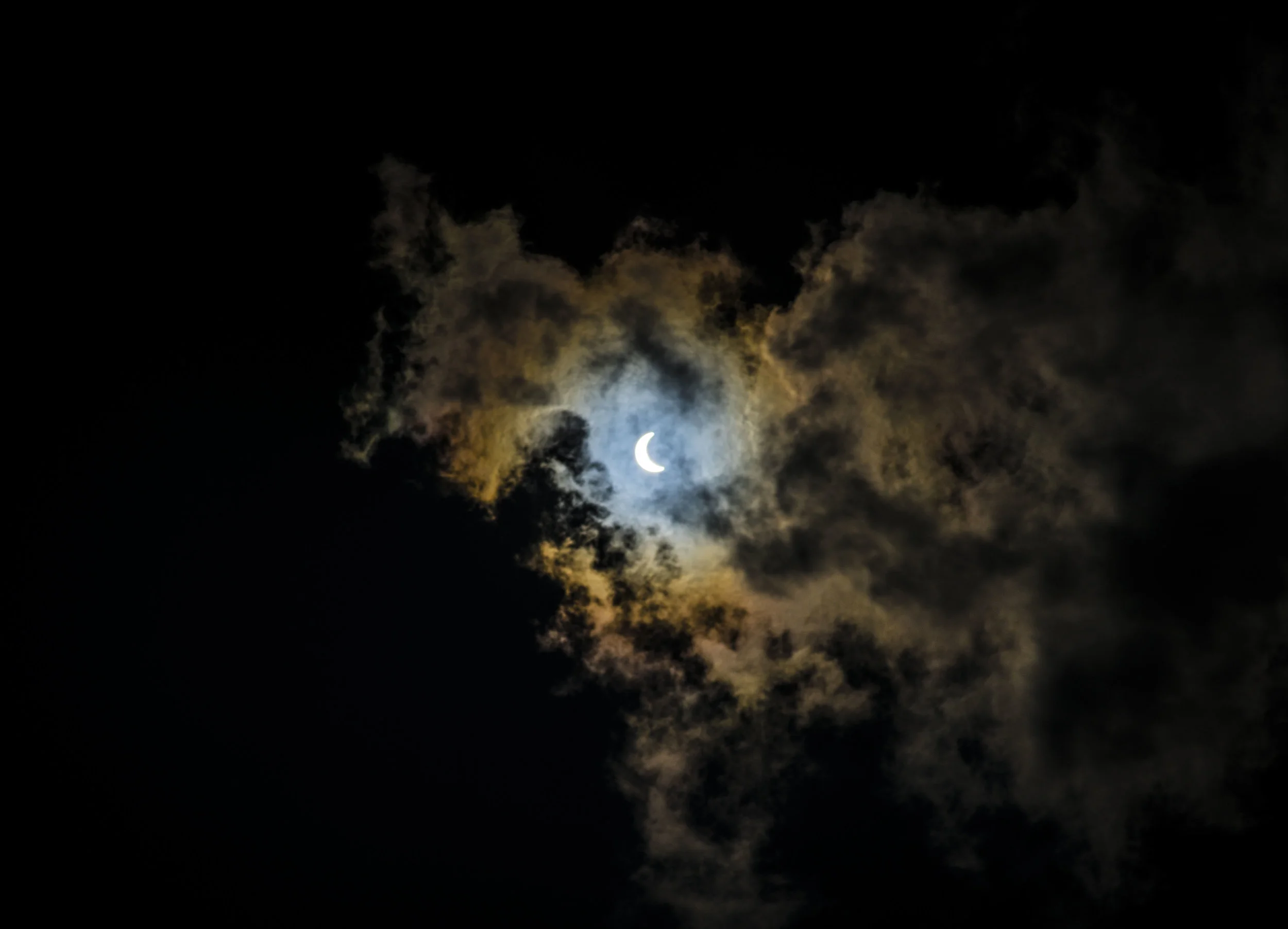
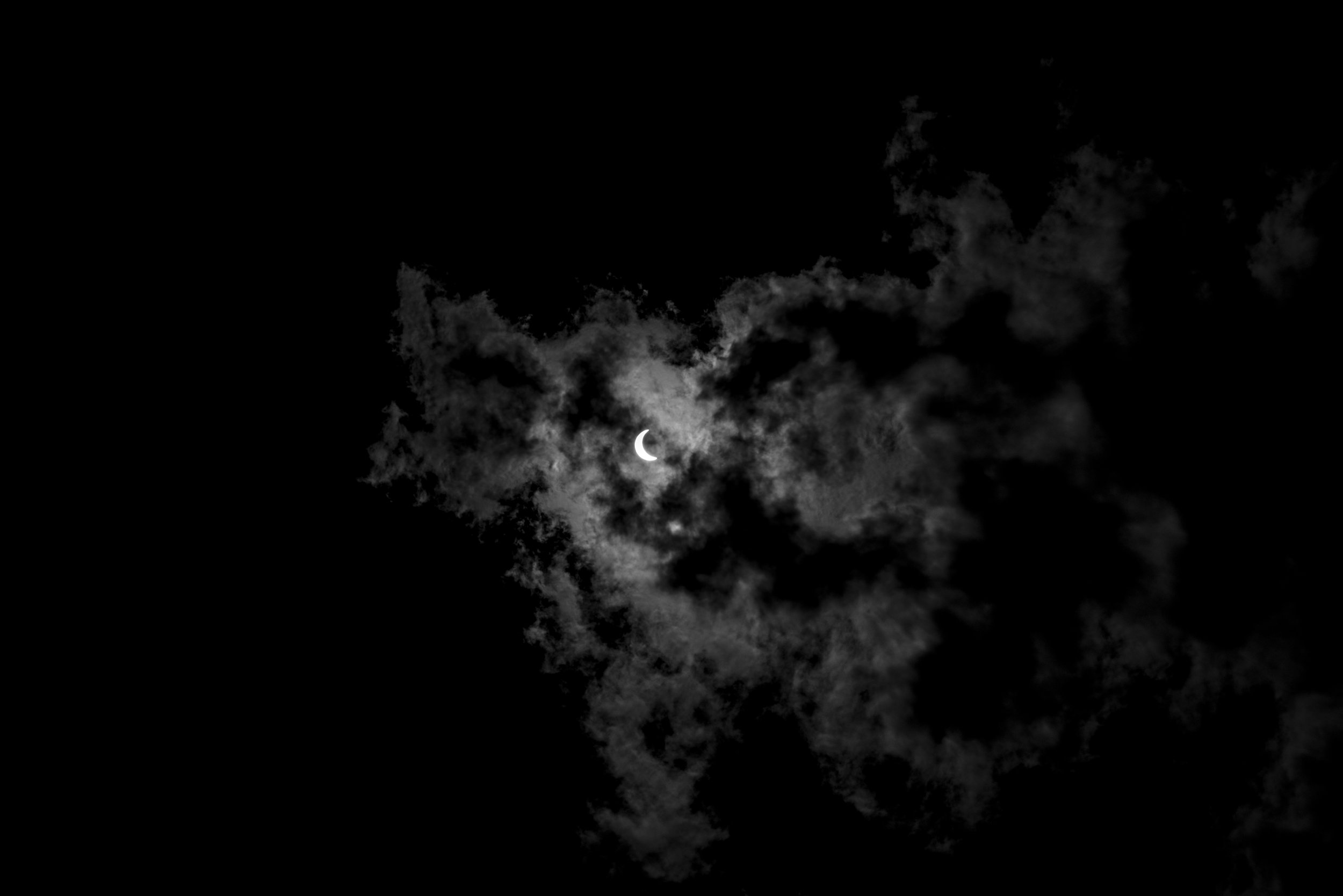
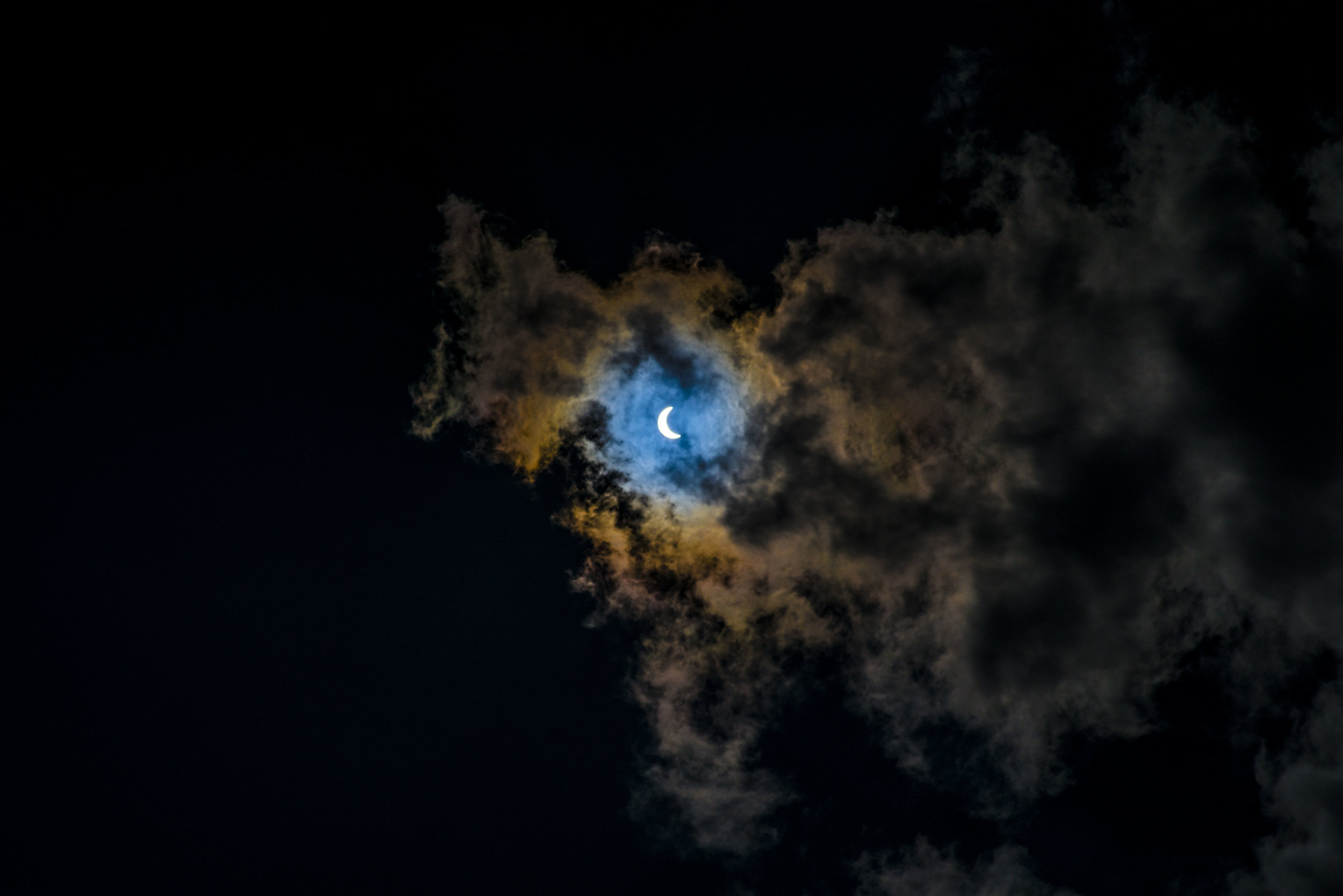
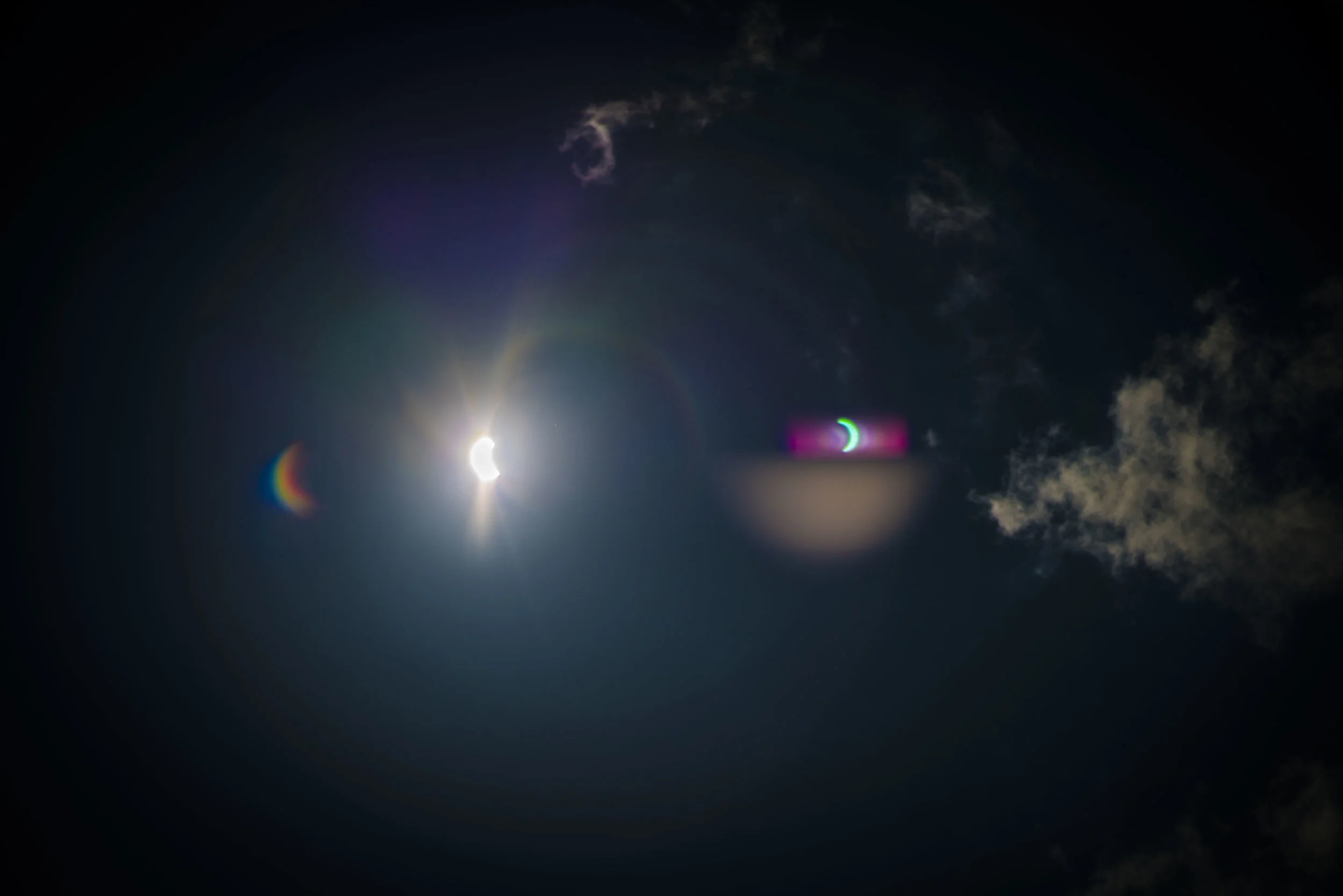
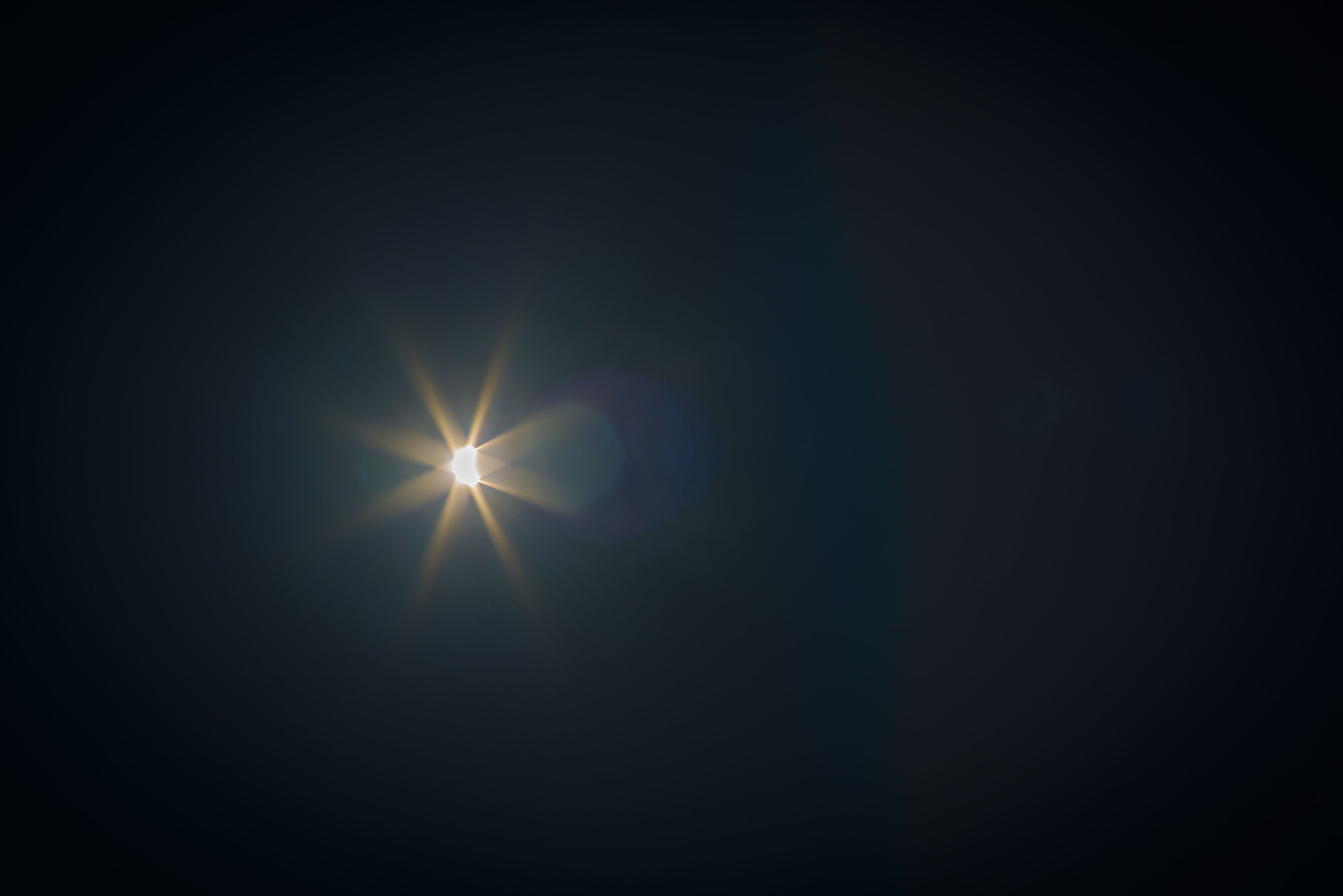
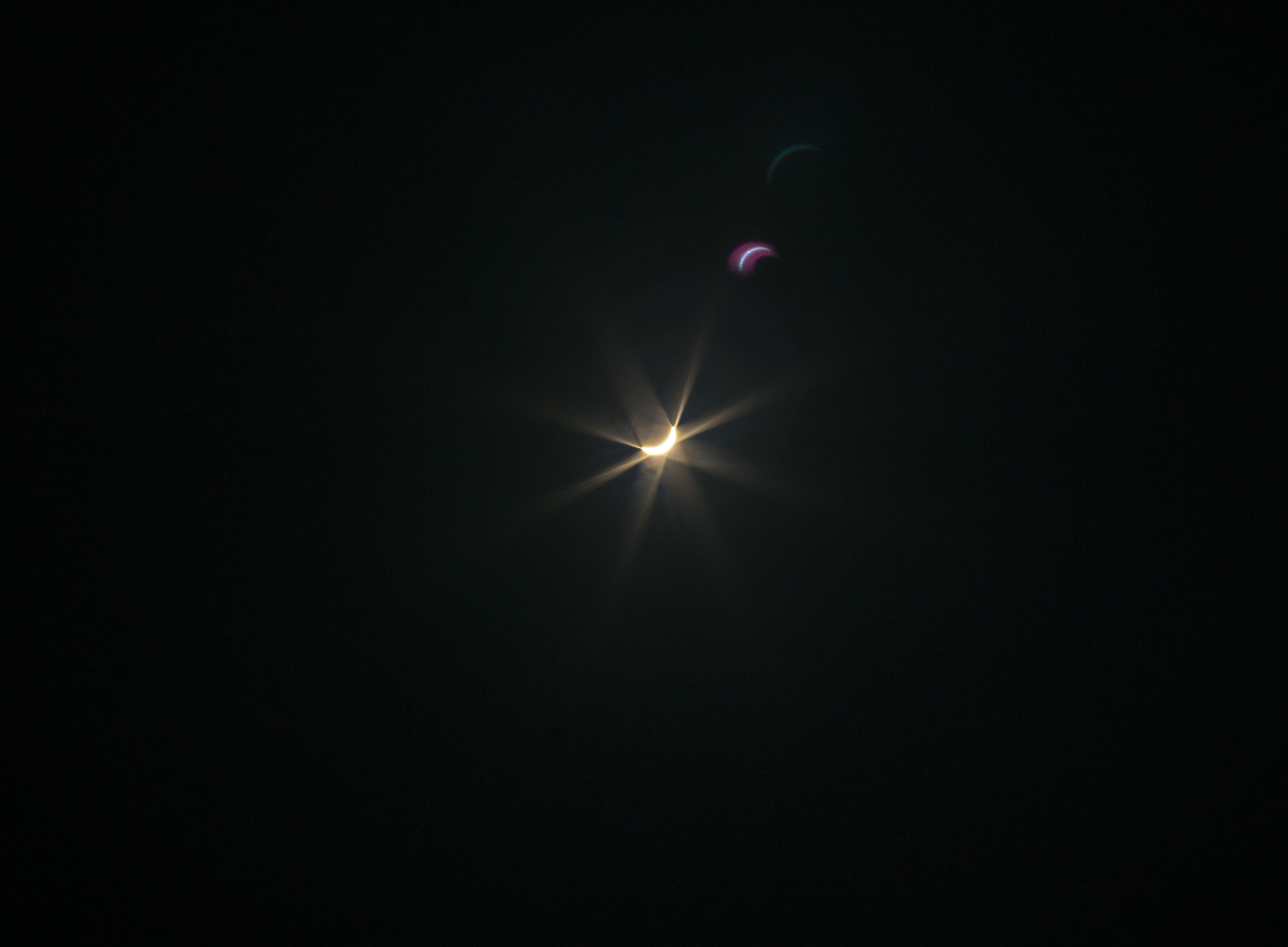
Suffice it to say, I will be much more prepared for the 2024 eclipse. For one thing, I will hopefully own or rent a telephoto lens such as a 70-200mm, so that I can get a wider variety of shots. More importantly, I WILL BE CLEANING ALL OF MY ND FILTERS THIS TIME.
In the meantime, these pictures will have to do. The good thing about them is knowing that I have the raw files, and I'll be able to revisit these in the future. I hope to learn much, much more about color grading in Photoshop & Lightroom in the years to come, and I will bring out a lot more layers in these images. Most of my work here was novice stuff, like increasing the vibrance and saturation (or with the black & white photos, stripping that away completely). I suspect the cosmos have a lot more to uncover, and I've just scratched the surface.
Did you watch the 2017 eclipse? Did you manage to get any photos? Share your experience in the comments below!

